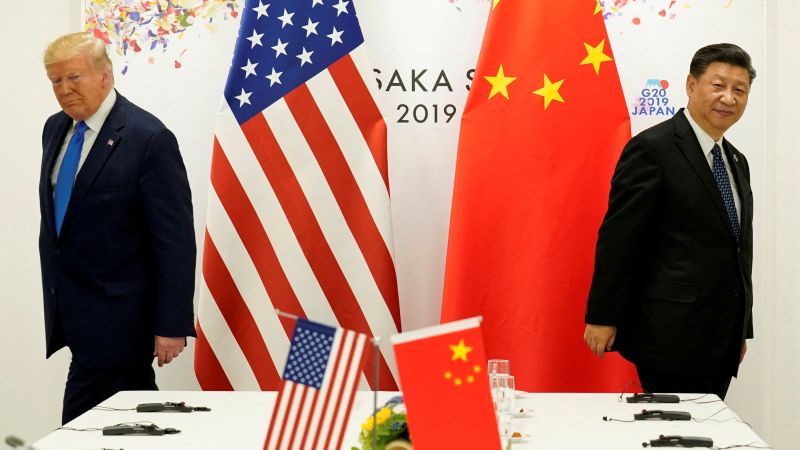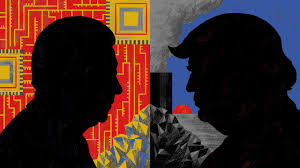The ongoing trade tensions between the United States and China have once again escalated with the latest moves sending shockwaves through global markets. President Donald Trump expressed surprise at China's decision to tighten export controls on rare earths, essential minerals used in various industries like electronics, automobiles, and semiconductors. Trump accused China of being hostile, leading to a threat of increasing tariffs on Chinese imports.
In response, China defended its actions, pointing to Washington's expansion of restrictions on Chinese firms as the catalyst for heightened tensions. The tit-for-tat measures between the world's two largest economies have raised concerns about the progress made in trade negotiations and the potential impact on the global economy.
The recent escalation follows a period of thaw in US-China relations earlier this year following talks in Madrid. However, Washington's decision to broaden export restrictions on Chinese entities reignited hostilities. Experts and analysts in China denounced the US actions as provocative and detrimental to bilateral relations.
The core of the current dispute lies in rare earth minerals, where China holds a dominant position in the global supply chain. The tightened controls on rare earth exports have implications for a wide range of industries, including technology, defense, and automotive sectors. The move by China to tighten its grip on these critical minerals is perceived as a response to US actions rather than a strategic play for negotiation leverage.
The new rules not only target the export of raw rare earth materials but also extend to production technologies and overseas usage. These regulations have already disrupted supply chains and raised concerns about potential shortages and increased costs for companies reliant on these minerals. The impact is expected to ripple across industries, affecting production and innovation in sectors like artificial intelligence that rely on rare earths for advanced semiconductor manufacturing.
Amidst the rising trade tensions, the fate of a scheduled meeting between Chinese leader Xi Jinping and President Trump hangs in the balance. While both sides express openness to dialogue, the recent developments have cast a shadow of uncertainty over the prospects for meaningful negotiations.
Experts suggest that the current situation reflects a broader trend of deteriorating US-China relations, characterized by escalating tariffs, tech restrictions, and sanctions. China's response indicates its willingness to adopt similar tactics and safeguard its national interests in the face of perceived US aggression.
As the trade dispute unfolds, the global economy watches with bated breath, mindful of the potential implications of this latest chapter in the ongoing US-China trade saga. The intricate dance of diplomacy, negotiation, and power dynamics between the two economic giants will shape the future landscape of international trade and cooperation.
With both sides seemingly digging in their heels, the path to resolution remains uncertain. The stakes are high, and the ramifications of further escalation could have far-reaching consequences beyond the realms of trade and commerce. As the world awaits the next moves from Washington and Beijing, the specter of prolonged conflict looms large over the horizon.


